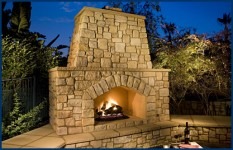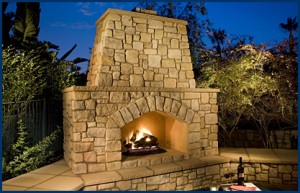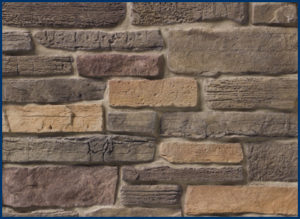Manufactured Stone
Riding the Ecomomic Wave
By Jennie Farnsworth
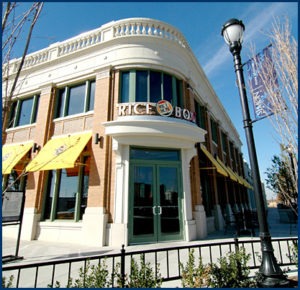
The economy has proven to be quite difficult for many industries to contend with during the last year. With crude oil and the consumer price index continuing to skyrocket [Energy Information Administration/Bureau of Labor Statistics], national unemployment rates at 5 percent [Bureau of Labor Statistics], and a massive 1.1-million jump in 2004 poverty rates that has continued to increase for four consecutive years [U.S. Census Bureau], it’s a wonder businesses are able to tread these economic waters. However, there are many niche markets, such as manufactured stone, that are prospering despite these economic turns of events.
In speaking with representatives from the manufactured stone industry, many cite the formation of the Masonry Veneer Manufacturing Association (MVMA), aggressive research and development, new product lines, and quality products at a lower price point as factors for keeping their businesses healthy.
“We’re riding through this down time as best as we can, continuing to be creative, and continually providing alternative products to stimulate the different uses of manufactured stone and its applications,” says Julie Smith-Taylor, spokesperson for Eldorado Stone of San Marcos, Calif.
Driving the industry together
Formed in 2006, the MVMA has provided the manufactured stone industry with a central alliance to help increase market share through “proactive technical, advocacy and awareness efforts.” Later that same year, The American Society for Testing & Materials (ASTM) C15 Executive Committee approved the new subcommittee C15.11 on Adhered Manufactured Stone Masonry Veneer, in which many MVMA members are active participants. These two steps have made great strides in creating much-needed product specifications and installation guidelines for adhered manufactured stone masonry veneer.
“Because manufactured stone veneer was thought of like brick and natural stone, the architects still specified and drew specifications for installation just like those products and they really don’t correlate,” says Tony Pitts, VP of Artistic Stone in Ball Ground, Ga. “The founding fathers for this industry put together the MVMA, and [the association is] coming up with their own standards and guidelines for flashings, details and installation specifications. That’s probably the biggest new thing that’s hit our industry, because the architects were drawing specifications that really didn’t apply.”
In addition to its technical participation in the ASTM and building codes, the MVMA is also working to establish valuable working relationships with national organizations such as the American Institute of Architects, the American Society of Landscape Architects, the Construction Specifications Institute, the National Association of Home Builders, and the U.S. Green Building Council.
“We saw the value of helping the entire industry by taking a step in the right direction, bringing all the major players together, really doing the research and sharing the information, and not being afraid to communicate with everybody to enhance the entire industry,” Smith-Taylor says.
Continued growth
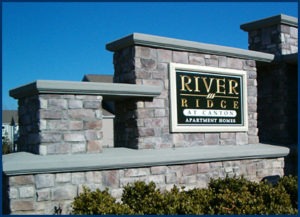
“In our marketplace of Atlanta, we’re seeing [manufactured stone] used on just about anything, from four-story apartment complexes to strip malls, restaurants to — obviously — residential. The acceptance of the product has been phenomenal. The architects have fallen in love with manufactured stone veneer. Luckily, we’re in that business.
“We were one of those few fortunate companies that had a growth year in ’07,” Pitts continues. “As a matter of fact, we’re going through another plant expansion as we speak. We’re adding on about 100,000 square feet in warehouse space and then another 50,000 square feet in plant expansion. It was needed, and it is nice to be able to say that you’re still growing.”
In addition to physical growth, companies are seeing product line expansions across the board. New suites of products, such as Artistic Stone’s Country Ledge, Eldorado Stone’s RoughCut, and Owens Corning’s Cultured Stone ProStone series, to name a few, are helping to keep designers’ interests.
Companies are not only providing new variations that emulate the look of natural stone, but also creating new looks beyond the norm. While manmade stone has typically attempted to replicate traditional natural stone masonry products, some companies are finding a new path by emulating non-traditional materials as well. Two of Eldorado Stone’s new lines, Eldorado Stone Adobe and CoastalReef, emulate the unusual building materials of adobe and coral reef, opening the idea of manmade products to a whole new design level.
“It’s a new approach to the kind of things that can be done in the manufactured stone environment compared to the traditional lines that we create,” Smith-Taylor says. “Manufactured stone is all about taking bits and pieces from other things, which allows you to create a look that’s solely your own.”
End-user input, design trends
While end-user input is always important to business success, it’s even more imperative when the market share becomes increasingly competitive.
“Over the last 12 months, we’ve really been working diligently with our customer base to listen to the needs they have in this challenging market,” says Kevin Grotke, director of sales for Owens Corning Masonry Products in North America, located in Toledo, Ohio. “It became very clear in those conversations that a lower priced value manufactured stone that met very specific quality attributes was incredibly important to more and more builders. Today, quality and value matter even more to more people.”
Eldorado Stone is another company that has pulled together its client base resources to create innovative products that hit customer needs.
“We have a very aggressive research and development department, and a few years ago we sat down and realized a wonderful way for us to give more creative tools to the people who are specifying our manufactured stone products was to find out what they’re working on and see what their wish list was,” Smith-Taylor says. In doing so, Eldorado Stone brought together a team of the most influential architects, colorists and designers on the west coast and created several product lines that follow the newest and latest design trends that architects are following, such as outdoor areas and unique interior uses.
“At Owens Corning, we do see a lot moving more toward outdoor living spaces, tying the manufactured stone in with the natural environments,” Grotke says. “Outdoor kitchens, outdoor patios with design elements toward the kitchen concept or a family room concept with a fireplace and/or fire pit, and really incorporating manufactured stone throughout that natural environment.
“We also see manufactured stone being used in more unique ways for the interior of homes,” Grotke continues. “We’ve seen some manufactured stone applications on feature walls and in the kitchen area, primarily around stoves, pizza ovens and things of that nature. Designers are really taking manufactured stone and incorporating it for the interior, exterior and behind the home, not just necessarily in traditional uses, which may be the front elevation or fireplace surround.”
Smith-Taylor agrees, saying “We’re finding that there’s a major interest in blending manufactured stone and brick in different elements, including the use of manufactured stone with brick accents. So, we’re seeing a lot of combining of elements and textures and very different stone profiles in use. There’s so much continued growth potential in the uses of manufactured stone.”
